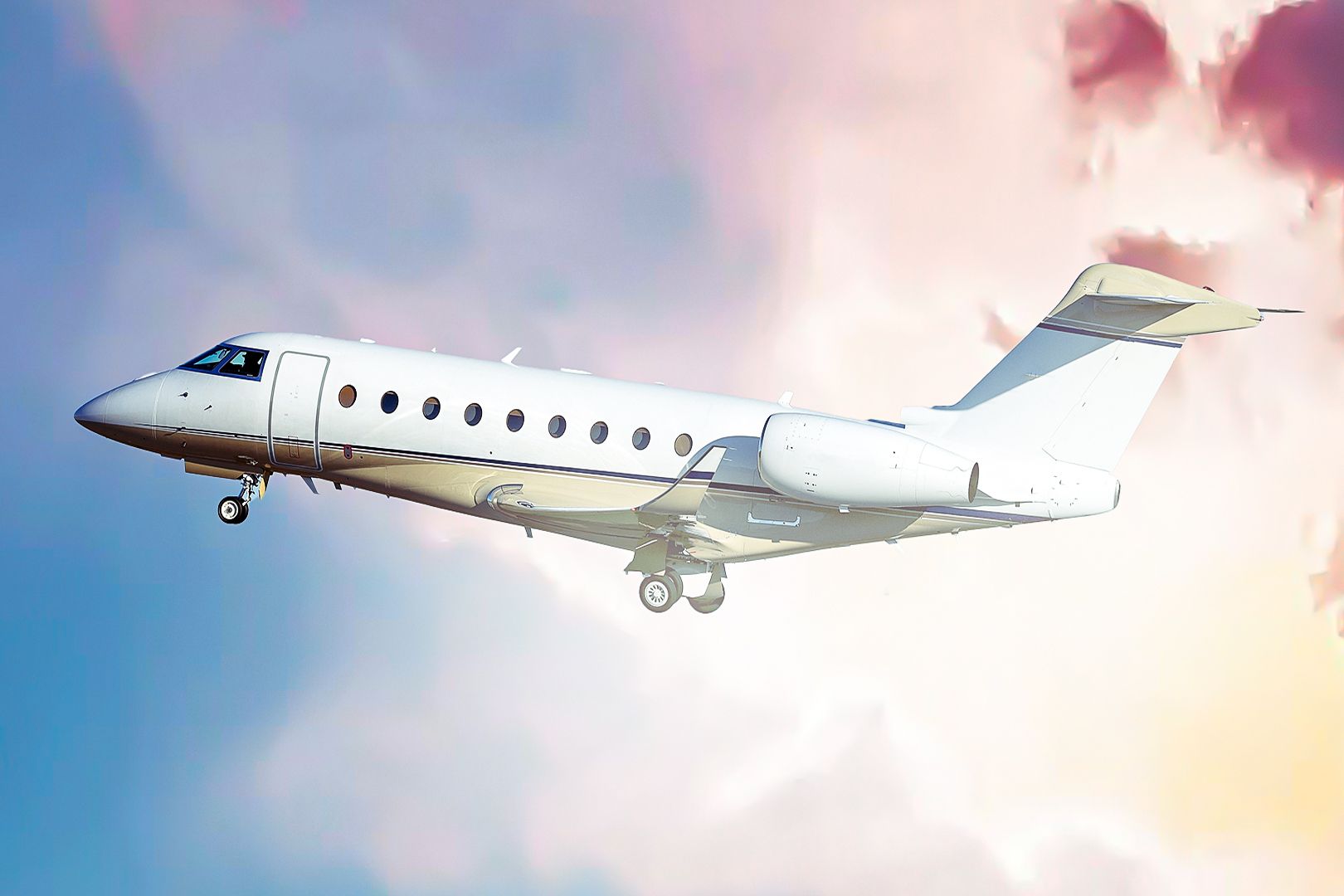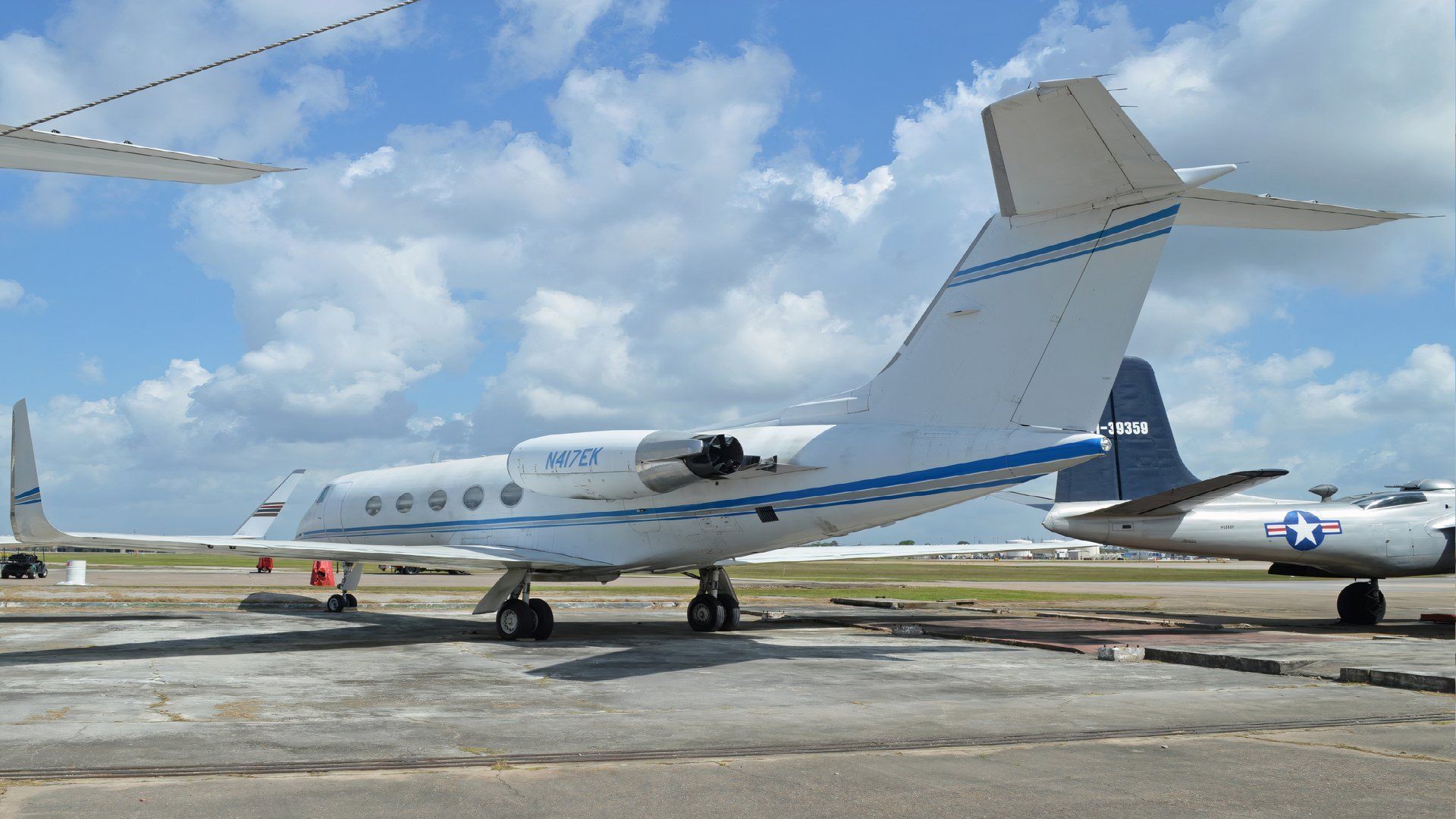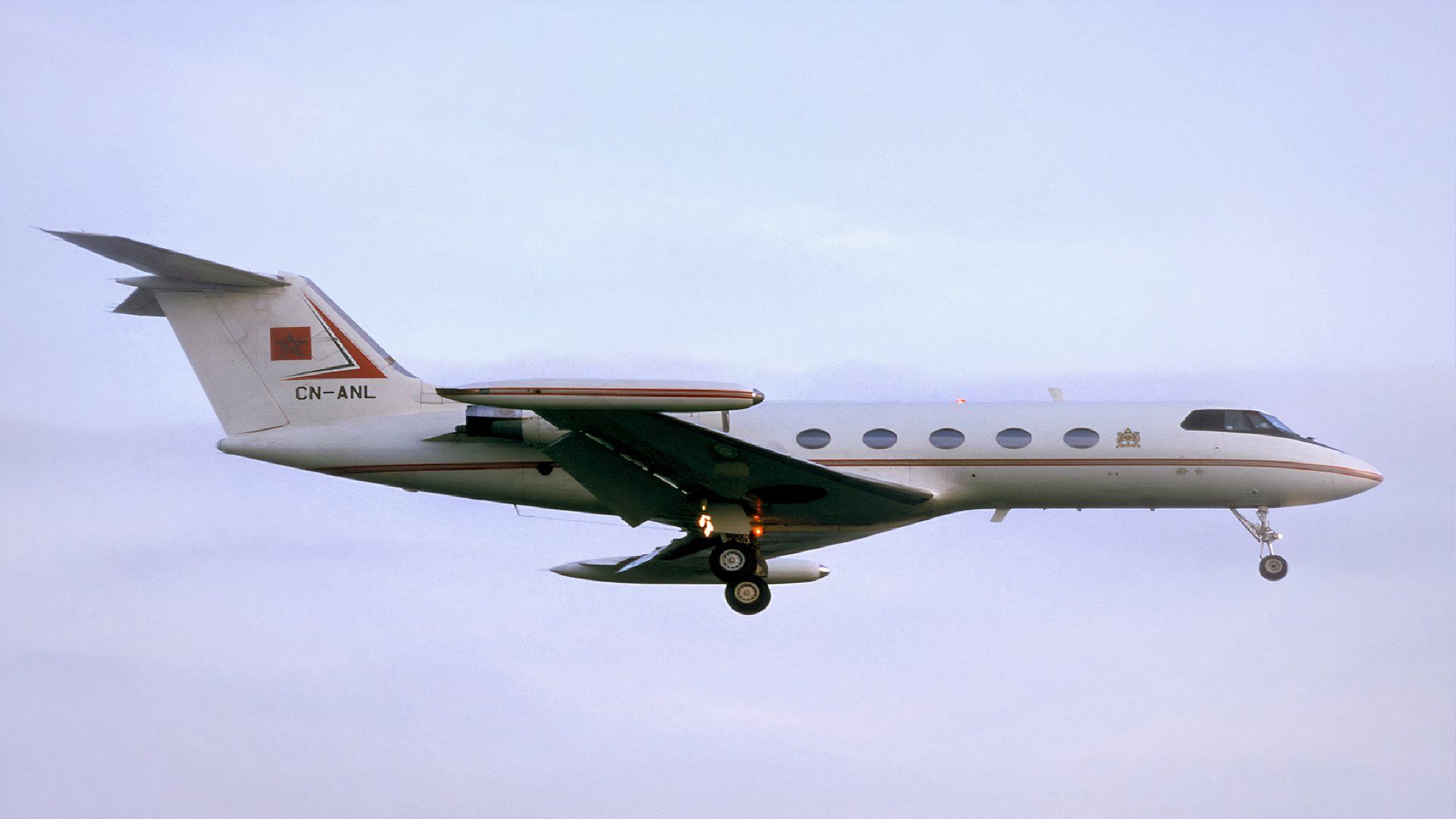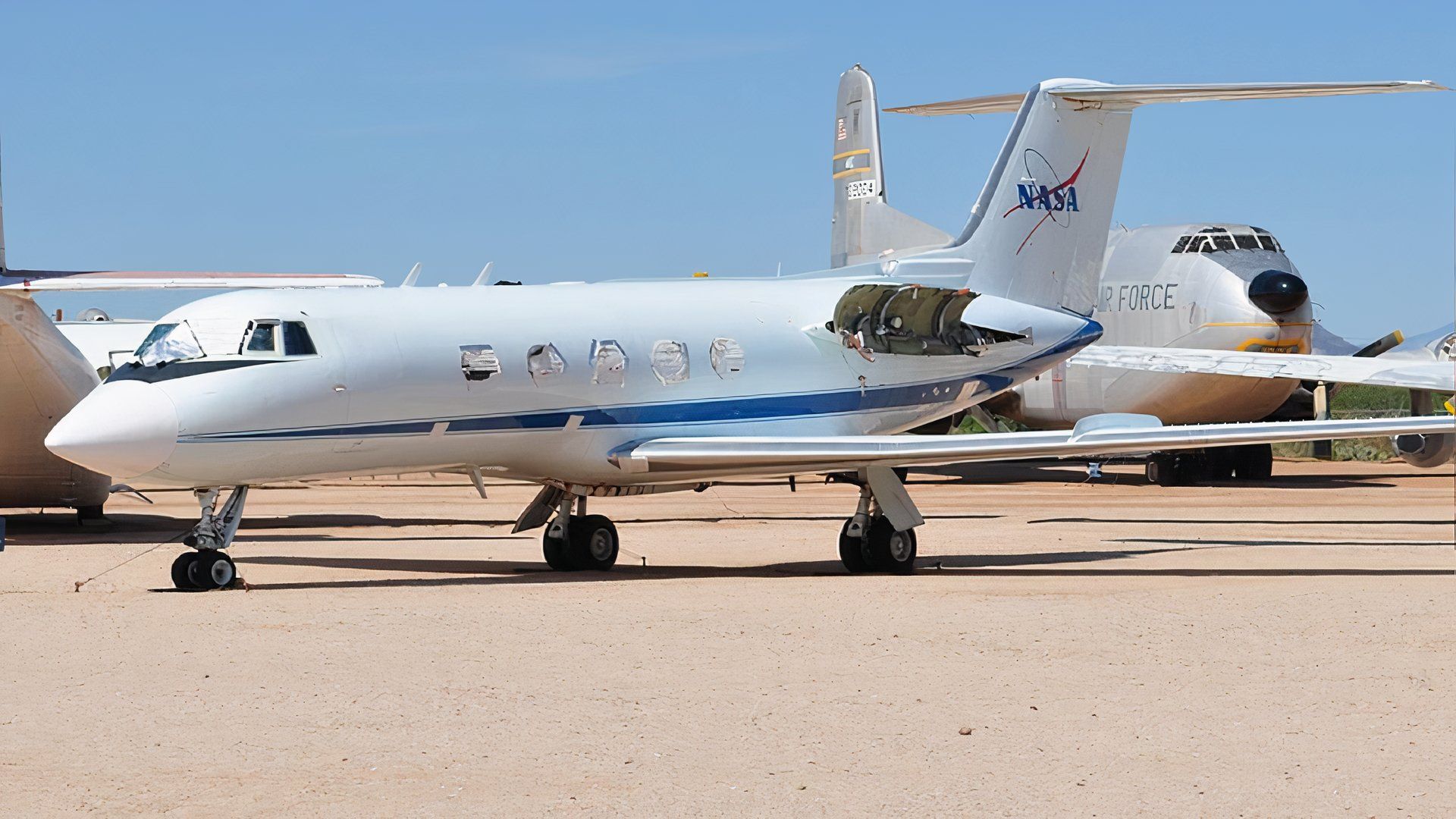Since 1963, when the first private jet, Learjet, flew, the industry has made breakthroughs. Manufacturers of private jets started building them for higher speeds. They incorporated technology in the avionics to improve operations and even installed engines that supported sustainability. Designers made private jets with bigger cabins. The Gulfstream II is the first large-cabin private jet certified in 1967. It now has space for up to 12 passengers.
Being large didn’t slow it down, as its cruise speed was around 450 to 475 knots. It was also the first business jet to travel nonstop from the United States to Europe in 1968. Although its production stopped in 1980, the Gulfstream II still shapes aviation designs.

Related
What Type Of Gulfstream Jet Does LeBron James Fly?
A closer look at the basketball legend’s Gulfstream G280 super-midsize private jet.
The Gulfstream overview
The Gulfstream II was a twin-engine jet first developed by Grumman before Gulfstream Aerospace launched it as its second private jet model. Grumman developed the jet, basing its design on Gulfstream I, becoming the first large-cabin private jet.
This aircraft’s cabin could accommodate up to 12 passengers. Its height was also ideal for long journeys. Its two engines were designed to increase performance, and the maximum speed was 500 knots.
Gulfstream II had designs and features that other aircraft lacked at that time. As a result, it became more luxurious and reliable.
Gulfstream II specifications
Airframe:
|
Specification |
Details |
|---|---|
|
Type |
Low-wing monoplane business jet |
|
Construction |
Aluminum semi-monocoque |
|
Length |
66 ft (20.1 m) |
|
Wingspan |
68 ft 10in (18.6 m) |
|
Exterior height |
24 ft 6in(6.4 m) |
|
Wing area |
425 sq ft (39.5 sq m) |
|
Engines |
Double engines |
Performance:
|
Specification |
Details |
|---|---|
|
Maximum speed |
500 knots |
|
Cruise speed |
485 mph (780 kph) |
Range:
|
Model |
Range |
|---|---|
|
GII |
2,000 miles (3,219 km) |
|
GIIA |
2,500 miles (4,023 km) |
Service ceiling:
|
Specification |
Details |
|---|---|
|
Service ceiling |
41,000 ft (12,497 m) |
Capacity:
|
Specification |
Details |
|---|---|
|
Passengers |
12-14 |
|
Crew |
2 |
|
Baggage |
Around 14 suitcases |
Gulfstream II achievements
The Gulfstream II had more achievements than being the first large-cabin private jet. It went from being the largest bird in the skies to working with NASA in space. In the 1960s, NASA bought a few GII aircraft to use as space shuttle trainers. So, they modified them by adding weather radar and sensors around their nose. They also upgraded the navigation and data recording systems to resemble space shuttles when training astronauts to land them.
GII’s history of excellence didn’t stop there. The U.S. Air Force operated several GII aircraft to transport officers and VIP personnel. Some even had the honor of flying the Vice President as Air Force Two.
The Missile Defense Agency, part of the U.S. Department of Defense, was developing systems to intercept ballistic missiles that required an aircraft capable of high-altitude, long-duration surveillance flights to track missile tests and collect data. So, they modified the GII by adding a dorsal fairing to the fuselage that could hold a telescope. Gulfstream was intent on becoming the first aircraft to achieve milestones. In 1968, it became the first business jet to fly nonstop across the Atlantic Ocean.
Gulfstream II’s unique features
The GII might be older than most jets, but its capabilities and features set it apart.
- Large Cabin: The GII had the largest cabin of its era. Not even newer models can compare with its size. The cabin allowed room for two members of the crew area and 12–14 passengers and other amenities. In the cabin was a lavatory and entertainment center.
- Pressurized Cabin: This is one of the first business jets with a pressurized and air-conditioned cabin. This allows passengers to stay comfortable at high-altitude cruising without fatigue or feeling sick.
- Speed: This aircraft cruised at up to 450 to 475 knots faster than earlier jets while still maintaining an extensive cross-country range.
- Oval windows: The oval windows on this aircraft brought in natural light and also gave a view to the world below.

Related
Legacy Of Luxury: What Made The Gulfstream G450 So Special?
The price of a new G450 was as high as $32 million.
Gulfstream II regulatory challenges
Even with all the achievements, GII faced some challenges, particularly with noise compliance. Tests showed the loud Rolls-Royce turbojet engines on the GII exceeded the newly imposed Stage 2 noise levels when tested under federal procedures. Then later, the Federal Aviation Administration (FAA) modified regulations that prohibited operating jets weighing 75,000 pounds or less that didn’t meet Stage 3 noise compliance after December 31, 2015.
Unfortunately, GII’s 1960s-vintage jet engines weren’t designed to operate as quietly as regulators demanded. This meant that the GII couldn’t operate in some airports, which threatened to ground the entire GII fleet and prevent further production or resale of used models.
The solution was retrofitting the aircraft with hush kits. Many of these aircraft couldn’t comply due to the high cost of hush kits. As a result, operators were left with limited options: they could either sell their non-compliant jets at a reduced price, scrap them, or attempt to sell them outside the U.S., where similar noise regulations didn’t apply. And that’s how the Gulfstream II quieted down.
Gulfstream II: paving the way
The GII enjoyed its earlier years, being recognized as the first large-cabin private jet with a long range. It set the pace for executives to travel long without layovers by flying across the Atlantic Ocean without stopping.
NASA and the military must have known how reliable GII was when they chose it for their missions. To show how special the GII is, John Travolta donated one to a museum to honor his deceased son. The designers of GII might not have anticipated challenges with noise regulations, but the aircraft contributions to the business aviation sector will last for generations.




